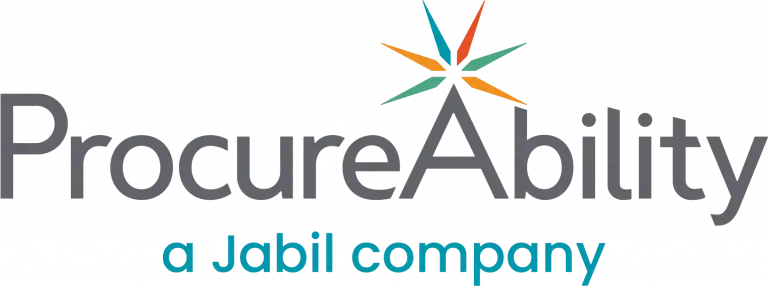The Sustainability Secret: Procurement as the Difference Between Goals Met and Goals Missed

St. Petersburg, FL (November 2, 2025) – Darshan Deshmukh, President of ProcureAbility, was recently featured in Supply & Demand Chain Executive.
Read his full article in Supply & Demand Chain Executive and below:
2025 was meant to mark a turning point for sustainable supply chains. For years, companies have circled this date on their calendars, setting ambitious pledges to transform packaging, sourcing, and energy use. The vision was bold: by mid-decade, procurement would be at the forefront of the climate fight. Yet as the deadline arrives, the story is mixed. Some companies are holding firm1 on their commitments. For example, McDonald’s2 pledged that all its guest packaging would come from renewable, recycled, or certified sources by the end of this year. Microsoft3 aimed to achieve 100 percent renewable energy consumption in 2025.
Meanwhile others are quietly scaling them back in response to market pressures, growth demands, and shifting priorities. Last year, Air New Zealand4 lessened its goal of reducing its emissions by 28.9 percent by 2030 to just a 20-25 percent reduction, which still goes beyond the airline industry’s goal to reduce emissions by 5 percent by 2030.
This article examines where corporate sustainability goals stand today—what’s been achieved, what’s been delayed, and what these course corrections mean as businesses look ahead to the even steeper 2030 climate targets. The central question: can supply chains rise to the challenge, or will ambition continue to collide with reality?
Procuring sustainability
Sustainability goals are only as strong as the procurement teams working to deliver them. From sourcing eco-friendly materials to ensuring supplier practices align with ethical and environmental standards, procurement is the engine that turns corporate commitments into measurable progress.
Procurement leaders are uniquely positioned to influence both environmental and social outcomes. By shaping supplier partnerships across global markets, such as India, Vietnam, Mexico, and China, they can ensure ethical labor practices, strengthen local economies, and foster innovation that drives long-term resilience. Done well, these partnerships not only advance ethical practices but also strengthen supply chain resilience.
Procurement also plays a critical role in product and packaging design. By collaborating with product teams to simplify and standardize, procurement can dramatically cut waste and inefficiency. Instead of producing custom packaging for every SKU, forward-thinking organizations are moving to standardized formats and postponing customization until the final production stage. This reduces material use, lowers costs, and streamlines logistics.
At the highest level, procurement strategy can unlock dual value: advancing corporate sustainability commitments while also delivering cost efficiencies and operational excellence. Supplier consolidation, bulk purchasing, and harmonized standards reduce complexity and emissions while enhancing financial performance. In today’s climate-conscious economy, procurement is defining how sustainability goals are achieved.
Accurately measuring supply chain sustainability
Sustainability in supply chains is a networked responsibility. A company’s progress is inherently tied to that of its suppliers, which is why supplier performance either amplifies or limits corporate sustainability outcomes.
This is especially true when it comes to emissions. For most organizations, Scope 3 emissions (those generated upstream by suppliers and downstream by partners) account for approximately 90 percent5 of the total footprint. Managing these emissions requires deep collaboration, and procurement is on the front line. As the function closest to suppliers, procurement professionals are best positioned to influence, measure, and improve sustainability performance across the value chain.
But accurate measurement remains one of the greatest challenges. Too often, companies rely on voluntary supplier reporting, which varies in quality and can be difficult to validate, especially across second- and third-tier suppliers. To move beyond pledges and into accountability, companies must adopt more rigorous supplier audit processes, leverage digital tools for traceability, and establish strong governance around sustainability data.
Yet technology and audits alone are not enough. True transparency requires a cultural shift, where direct suppliers are not only measured but also incentivized to extend the same scrutiny and standards across their own networks. This cascading accountability is only possible when procurement builds trusted, strategic relationships that encourage suppliers at every tier to contribute to the shared sustainability agenda.
At its core, measuring sustainability is about building resilient, verifiable systems of trust across the supply chain. And procurement is the function uniquely equipped to make that happen.
Don’t sweat the spotlight
As procurement becomes central to corporate sustainability, it also becomes central to how those commitments are perceived. In today’s marketplace, consumers, investors, and regulators demand transparency and accountability, even across the most complex supply chains. This means procurement teams, whether accustomed to the spotlight or not, must be prepared to stand behind the data and the story it tells.
That requires treating sustainability with the same rigor as any financial or operational KPI. Clear definitions, consistent measurement, and strong baselines form the foundation for credible reporting. Ambitious yet realistic targets keep organizations moving forward, while continuous course correction ensures that commitments remain achievable.
But metrics alone are not enough. What builds trust is the ability to communicate results with clarity and context, explaining not only progress but also the challenges and trade-offs along the way. When procurement can demonstrate both discipline in execution and transparency in reporting, it strengthens the organization’s ESG narrative and enhances its reputation in the eyes of all stakeholders.
Ultimately, stepping into the spotlight is an opportunity for procurement. By leading with data, accountability, and credibility, procurement transforms sustainability from a compliance exercise into a source of competitive advantage and public trust.
Sourcing sustainability success
Reaching ambitious sustainability milestones (2030 or further) will not be achieved through vision statements alone. It will be achieved through the strategic influence and execution of procurement. Procurement teams are the connective tissue between corporate ambition and supply chain reality: sourcing sustainable materials, shaping supplier ecosystems, and ensuring that progress is both measurable and credible across every tier.
For companies serious about making a lasting impact, procurement must be seen not as a support function, but as a strategic catalyst for achieving ESG commitments. By harnessing procurement’s ability to align sourcing decisions with sustainability objectives, organizations can drive innovation, reduce risk, and create resilience across global supply chains.
In the end, the path to sustainability leadership runs directly through procurement. Those that empower their procurement teams to lead will not only meet their goals but set the standard for what responsible and future-ready business looks like.
Read the full article on Supply & Demand Chain Executive.
Sources:
- PwC’s Second Annual State of Decarbonization Report, 2025
- By 2025, all of McDonald’s Packaging to Come from Renewable, Recycled or Certified Sources; Goal to Have Recycling Available in All Restaurants, 2018
- Powering sustainable transportation
- Air New Zealand: 20230 Emissions Guidance, 2025
- What are Scope 1, 2, and 3 emissions?, 2024
About Darshan Deshmukh
Darshan has extensive global operations and delivery experience in the managed services and advisory fields. He has deep expertise in building global programs focused on procurement, strategic sourcing, category management, and supply chain/procurement transformation.
Prior to joining ProcureAbility, Darshan spent most of his career building large-scale, global delivery operations. He spent a decade in a series of global leadership positions in IBM’s Integrated Supply Chain organization and then joined Denali Sourcing Services as operations leader and was instrumental in establishing and growing the company’s global delivery capability. After Denali’s acquisition integration with WNS, Darshan transitioned to tech start-ups, OpenGov and Icertis, where he built their global professional services and customer success organizations. Darshan has worked with global clients in high-tech, financial services, manufacturing, retail, utilities, and healthcare/pharma.
Darshan holds an undergraduate degree in Mechanical Engineering, a graduate degree in supply chain from Penn State, and an MBA from MIT Sloan School of Management. He loves international travel, movies, and everything food, and divides his time between Seattle and Palm Springs.
About ProcureAbility
ProcureAbility, a Jabil company, is the leading provider of procurement services, offering advisory, managed services, digital, staffing, and recruiting solutions. For nearly 30 years, we have focused exclusively on helping clients elevate their procurement function.
We combine leading methodologies, analytics, market intelligence, and industry benchmarks with our uniquely flexible and customizable service delivery model. Global organizations of all sizes trust ProcureAbility to transform their procurement operations, drive growth, and reimagine what’s possible.
Let ProcureAbility help you reimagine your procurement capabilities.
Media contact:
Kathleen M. Pomento
Chief Marketing Officer | ProcureAbility
kpomento@procureability.com



